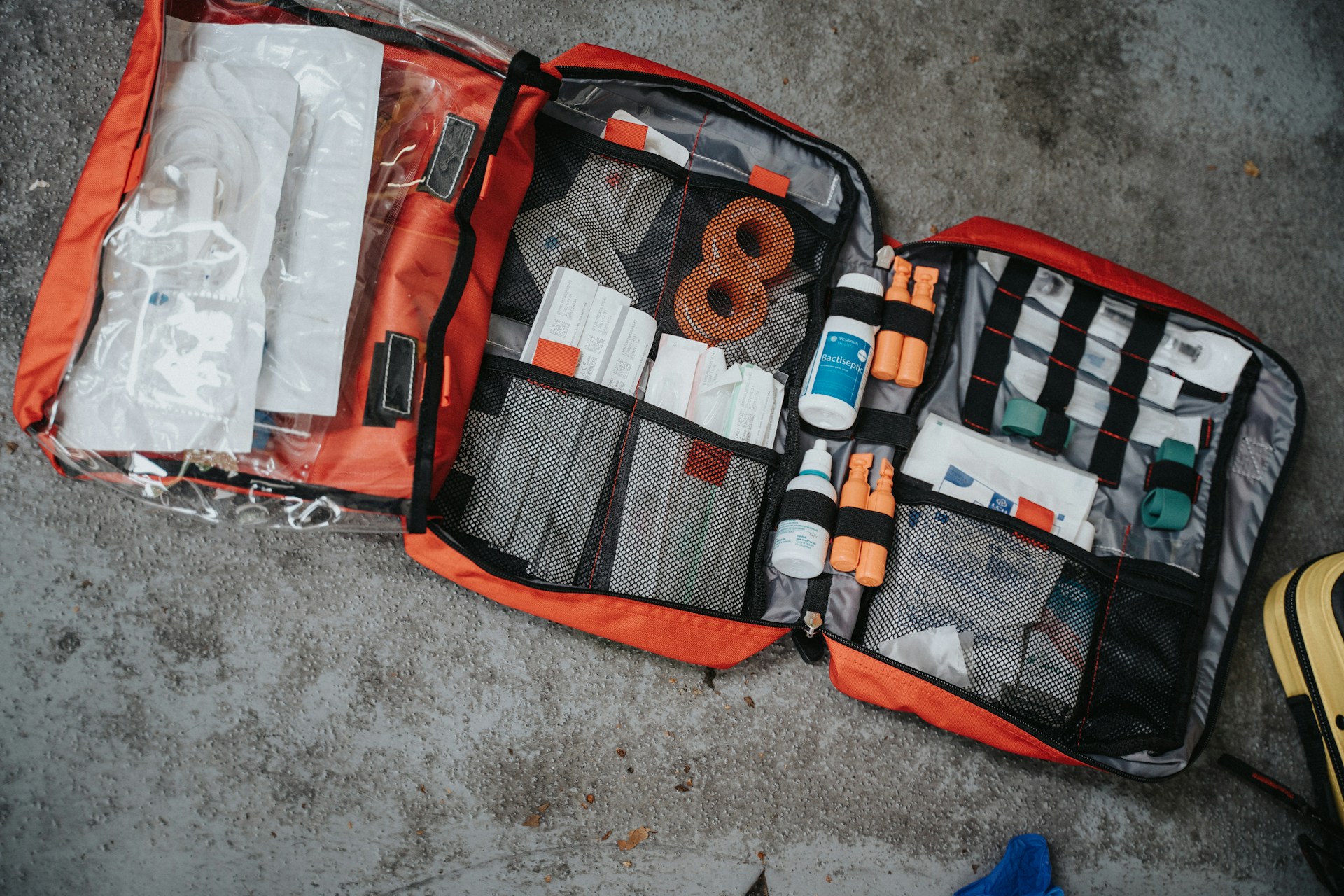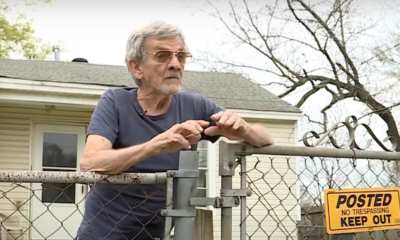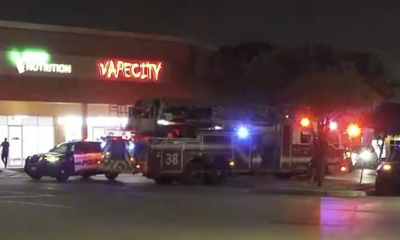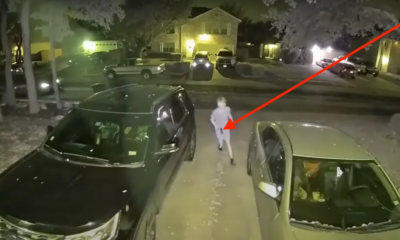Preparedness
Homeowner’s Bravery Turns Midnight Intrusion Deadly for Armed Invaders

In the quiet hours past midnight, a daring home invasion occurred in Hamilton County, Tennessee. A group of three armed intruders invaded a residential home. The homeowner, however, was not one to be easily frightened, opening fire on the intruders. This resulted in two of the invaders fleeing, while the third was fatally wounded.
Hamilton County Sheriff’s Office provided more details on the event. The officers reported attending to a home invasion call from the 6300 block of Shirley Pond Road around 1:25 a.m. last Tuesday. The home is situated in Harrison, a peaceful area half an hour northeast of Chattanooga, according to WTVC-TV.
The preliminary investigation by the sheriff’s office divulged that the homeowner had courageously confronted the three armed intruders. In the ensuing chaos, gunfire was exchanged between them.
” One of the suspects was struck during the exchange and died at the scene,” the sheriff’s office reported. The remaining two intruders made their escape by jumping through a window and fleeing the scene. Despite the immediate search by law enforcement in surrounding areas, the two suspects remain at large. The sheriff’s office is withholding the identities of those involved pending ongoing investigations.
The homeowner, whose identity is being kept anonymous for safety reasons, revealed to WTVC that this was the second consecutive night his home had been broken into. This shocking series of events has left the usually calm and safe neighborhood in a state of disbelief.
Residents expressed their surprise to WTVC, stating how unusual it was for such crimes to occur in their neighborhood, let alone twice in a row. The sheriff’s office investigators also agreed that this type of crime was a rarity in the area.
Public sentiment on the matter was crystal clear. “We the people must remain vigilant; [when there’s a] home invasion, shoot first and let ask questions later; remind the perps that this ain’t [California]; we’re armed and not scared to use ’em; WE ARE THE SOUTH!” one commenter said.
Another commenter on YouTube stated, “Good; perpetrators shouldn’t break into homes; it’s called divine intervention; get a job.” Another expressed thankfulness for the homeowner’s ability to defend his home and family, writing “I’m thankful the victim was able to defend family, home, and life.”
Watch a local news report about the incident below:
Let us know what you think, please share your thoughts in the comments below.

Preparedness
Medical Preparedness: Beyond the Basic First Aid Kit

When preparing for medical emergencies away from home, many people stop at purchasing a first aid kit. While these kits serve as a good foundation, they often fall short of comprehensive preparedness.
To truly be ready, it’s crucial to start by taking a basic first aid course. These courses are generally affordable and sometimes even free through civic groups or employers. Typically lasting 6-8 hours, they are designed with the assumption that Emergency Medical Services (EMS) are readily accessible.
However, for those who anticipate being in more isolated or challenging environments, a wilderness or remote first aid course is highly recommended. These courses, usually spanning two days, cost around $200, though community colleges may offer more economical options. They are tailored to equip you with the skills needed to handle medical emergencies when EMS could be delayed by up to 8 hours.
Pet owners should also consider a basic first aid course for dogs and cats. Larger pet stores often provide in-person classes, and the Red Cross offers online options for both pet and human first aid.
At home, having a well-organized and stocked first aid kit is essential. Whether you purchase a pre-made kit or assemble one yourself, it should complement your usual home medical supplies. The contents should reflect your medical knowledge and skills.
For “away from home” emergencies, focus on assembling two kits: a compact one for daily carry in a purse, briefcase, or commuter bag, and a slightly larger one for your 72-hour survival bag, commonly known as a Bug Out Bag (BOB). This bag goes by various names, including 72-hour kit, battle box, grab bag, go bag, GOOD bag (get out of Dodge), INCH bag (I’m never coming home), personal emergency relocation kit (PERK), or quick run bag (QRB).
The compact first aid kit should fit in a small zippered pouch. The M2 BASICS 150 Piece First Aid Kit is a solid choice, though it may require some customization. Consider removing the CPR mask, as current guidelines prioritize chest compressions. Instead, add pain relief tablets, sting relief, and other medications such as antacids, antidiarrheals, or cold remedies. Use small ziplock bags to organize multiple doses, labeling them with contents, dates, and standard dosages, or opt for single-use foil packs. A small tube of triple antibiotic ointment is also a valuable addition. Aim to keep this kit under 8 ounces.
Creating your own compact kit offers the flexibility to tailor it to your specific needs and available space. Soft-sided pouches, like pencil cases or small cosmetic bags, are preferable due to their packing flexibility. This kit is intended for everyday carry, not for your survival bag.
Essential items for your compact kit include:
– Various sizes and types of band-aids
– Self-Adherent Cohesive Bandage, also known as Coban™ or Vet Wrap, which can be used to secure gauze pads, wrap sprains, or hold splints
The goal of these kits is to sustain you through the initial 72 hours of an emergency. It’s important not to skimp on quality; even a simple band-aid should be reliable.
For your 72-hour bag, start with a sturdy, lightweight container. Soft pouches are recommended for their packing efficiency. You can find empty marked first aid bags to ensure easy identification during emergencies.
In addition to the compact kit items, include:
– Travel-sized tubes or containers for medications, ensuring you have at least a dozen of each type
– Hemostatic agents like Quick Clot gauze for severe bleeding
– Feminine hygiene products, space permitting
Customize your first aid kit to match your skill level. A full trauma or EMT kit is only useful if you know how to use the items.
Lastly, consider keeping duplicate first aid kits in each vehicle you own. This ensures you have access to essential supplies even if your Go Bag isn’t with you during an emergency.
Let us know what you think, please share your thoughts in the comments below.
Preparedness
Master the Art of Sheltering in Place for Safety

In today’s unpredictable world, the ability to “shelter in place” effectively is a crucial skill that can make a significant difference in ensuring your safety and that of your loved ones. Whether faced with an active shooter, a natural disaster like a tornado, or chemical hazards, knowing how to respond promptly and appropriately is essential.
When authorities advise you to “stay put,” immediate action is necessary. Tune in to local radio or television stations for specific instructions tailored to the emergency at hand. The first step is to get inside, bringing your family, emergency supplies, and pets with you. The exact location within your home or building will depend on the nature of the threat.
Once you are securely positioned, it’s important to communicate with your emergency contact.
“Call or text your emergency contact. Let them know where you are, if any family members are missing, and how you are doing.”
Minimize phone usage to keep lines open for emergency responders, using it only for essential communication.
Stay informed by continuously listening to updates on your radio, television, or phone. Do not leave your shelter until you receive confirmation from authorities that it is safe. If evacuation becomes necessary, follow official instructions carefully.
In certain emergencies, such as chemical leaks, you may be instructed to “seal the room” to prevent outside air from entering. This involves turning off air-moving devices like fans and air conditioners, gathering your emergency supplies, and blocking air entry points.
“Once officials say the emergency is over, turn on fans and other things that circulate air. Everyone should go outside until the building’s air has been exchanged with the now clean outdoor air.”
Preparation is key to effective sheltering in place, especially during chemical incidents. Select a room with minimal windows and doors, preferably one with a water source, like a master bedroom connected to a bathroom. For chemical events, choose a higher floor to avoid sinking vapors, which contrasts with other emergencies like tornadoes where lower levels are safer.
If caught outside your home, avoid sheltering in vehicles as they are not airtight. Instead, head to the nearest safe building. If that’s not possible, pull over safely, turn off the engine, and listen to the radio for official updates.
“Modern car radios do not use much battery power, so listening to the radio for an hour or two should not cause your car battery to die.”
Stock your shelter room with essentials such as a flashlight, battery-powered radio, extra batteries, food, and bottled water. Aim for a gallon of water per person, and consider using water from a toilet tank if necessary. Prepare to seal the room with plastic sheeting and duct tape to cover windows, doors, and vents, ensuring an airtight environment.
For a comprehensive guide on preparedness, FEMA offers a free PDF booklet that serves as an excellent starting point for anyone looking to enhance their readiness for emergencies. Being prepared to shelter in place is not just about having the right supplies; it’s about having the right mindset and knowledge to protect yourself and your family when it matters most.
Let us know what you think, please share your thoughts in the comments below.
Preparedness
Unlock Suburban Secrets to Self-Sufficient Living

The dream of rural living can feel elusive for those nestled within the confines of suburban neighborhoods. Yet, even amidst the manicured lawns and cul-de-sacs, the spirit of homesteading can thrive with a bit of ingenuity and determination.
The suburbs, home to a majority of Americans, offer a unique opportunity for those eager to embrace a self-sufficient lifestyle. According to HUD and Census data, “52 percent of U.S. households describe their neighborhood as suburban,” making these areas ripe for a homesteading transformation.
For those unable to escape to the countryside, becoming a suburban homesteader is a feasible and rewarding endeavor. The key is to cultivate a mindset that prioritizes self-sufficiency and sustainability, regardless of space limitations.
Developing a green thumb is an essential step. While you may not have vast fields at your disposal, small garden plots, container gardens, or even window herb gardens can yield a surprising amount of produce. The goal is to maximize your available space to grow your own food, whether it’s a few vegetables or a dwarf fruit tree.
Raising chickens is another practical option for suburban homesteaders. Many communities now permit backyard chickens, allowing you to enjoy fresh eggs and natural fertilizer for your garden. A small flock of hens requires minimal effort while offering substantial rewards.
Expanding your skills is crucial, even if you lack a barn. Homesteading involves practical skills like sewing, knitting, or even basic carpentry. Learning to mend clothes or tackle home repairs can significantly enhance your self-reliance.
Rainwater collection is another sustainable practice to adopt. “Essentially, you collect rainwater to keep it so it can be used later for landscaping, gardening, and stormwater management.” Many municipalities provide free rain barrels, making this an affordable way to conserve water.
Composting is an excellent entry point into homesteading. It reduces waste and enriches your garden soil. As Homestead.org notes, “The benefits of composting are wide-reaching even past the production of nutrient-dense soil that helps your plants grow more quickly and fruitfully.”
Beekeeping is another venture that doesn’t require much space. A couple of hives in your backyard can provide local honey and potentially some extra income.
Connecting with fellow suburban homesteaders can be invaluable. They offer advice, support, and the opportunity to barter or borrow materials, fostering a sense of community.
Aiming to reduce store visits is another homesteading goal. Learning to make items yourself, from clothes to homemade cheese or broth, can significantly cut down on shopping trips.
Finally, preparedness is a cornerstone of homesteading. Stock up on emergency supplies and non-perishable food items. A well-stocked pantry and first aid kit are essential, and many homesteaders also cultivate medicinal herbs for natural remedies.
By embracing these practices, you can transform your suburban lifestyle into one of sustainability and self-sufficiency, capturing the essence of homesteading without leaving your neighborhood.
Let us know what you think, please share your thoughts in the comments below.
-

 Tactical12 months ago
Tactical12 months ago70-Year-Old Fends Off Intruder with Lead-Powered Message
-

 Tactical12 months ago
Tactical12 months agoVape Shop Employee Confronts Armed Crooks, Sends Them Running
-

 Preparedness9 months ago
Preparedness9 months agoEx-Ballerina’s Guilty Verdict Sends Tremors Through Gun-Owner Community
-

 Preparedness7 months ago
Preparedness7 months agoGood Samaritan Saves Trooper in Harrowing Interstate Confrontation
-

 Tactical12 months ago
Tactical12 months agoMidnight SUV Theft Interrupted by Armed Homeowner’s Retaliation
-

 Survival Stories2 years ago
Survival Stories2 years agoEmily’s 30-Day Experience of Being Stranded on a Desert Island
-

 Preparedness7 months ago
Preparedness7 months agoArizona Engineer’s Headless Body Found in Desert: Friend Charged
-

 Preparedness7 months ago
Preparedness7 months agoBoy Saves Dad from Bear Attack with One Perfect Shot
Crotte
June 12, 2024 at 11:20 am
Permanent removal of the criminals solves the repeat offender problem!!!!!!
Pam Kesler
June 12, 2024 at 11:26 am
Have guns, train with them, use them.
Steve
June 12, 2024 at 12:14 pm
This would have had a completely different outcome if the homeowner hadn’t been armed.
A. B. Murphy
June 12, 2024 at 5:03 pm
In the south the second amendment is sacred. The problem with this story is that only one of the perpetrators was
reported hit by the homeowner. We don’t know if any of the others were hit or not — BUT we can hope. It is good
that the story was published. MAYBE, some of the possible future intruders will stop and think. However, it will
definitely be noted if there are reports of the homeowner owning firearms. The media won’t publish this type of
story with much encouragement in the face of the obvious facts.
Joe Forish
June 13, 2024 at 1:03 pm
He needs a little more training, 33% effectiveness is not acceptable.
Daffy
June 13, 2024 at 5:57 pm
SOB got what he deserved!
Bob
June 15, 2024 at 1:30 pm
THE USA SHOULD BE LIKE SWITZERLAND. EVERY CITIZEN SERVES IN THE MILITARY. UPON DISCHARGE THE ARE ISSUED A WEAPON.
HERE IN THE U.S. EVERYBODY SHOULD OWN A WEAPON FOR SELF DEFENCE.